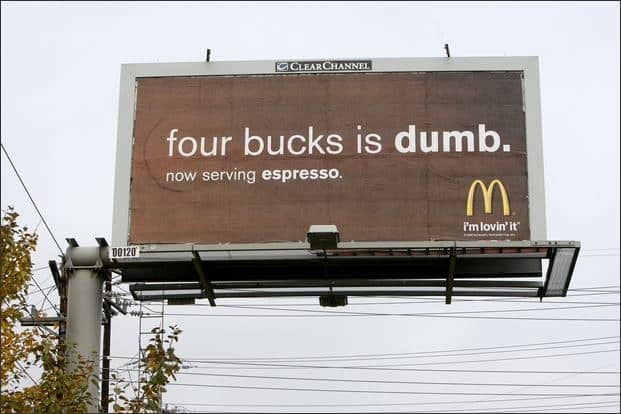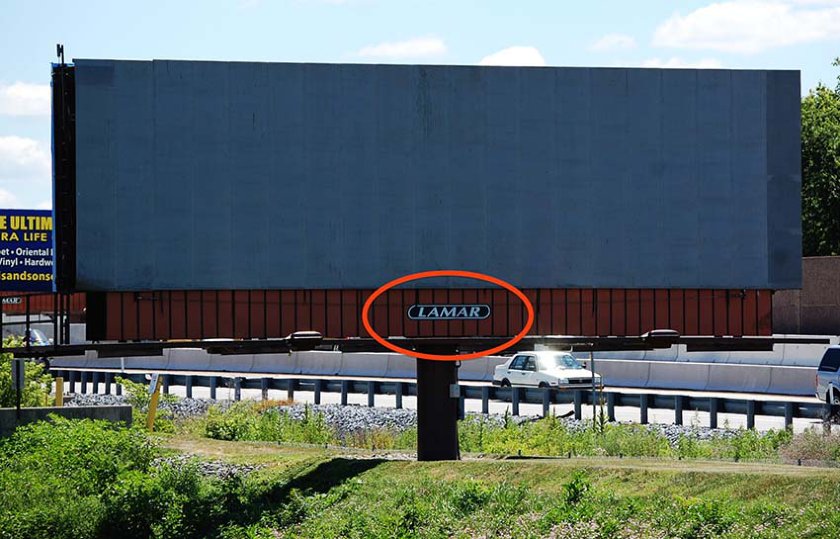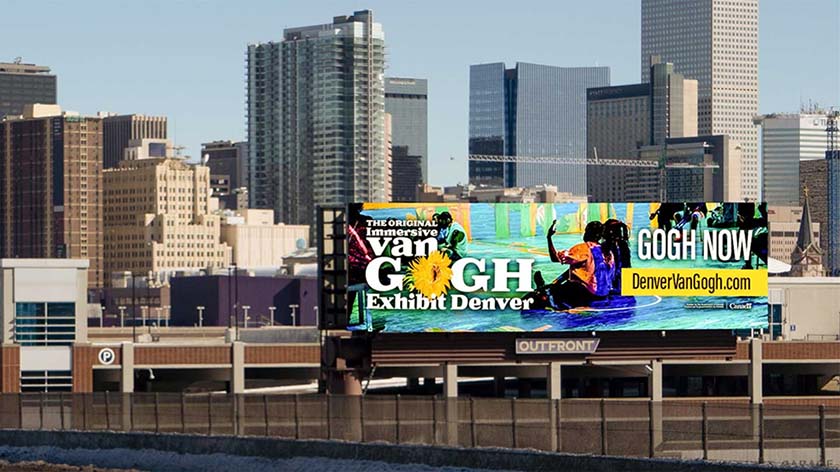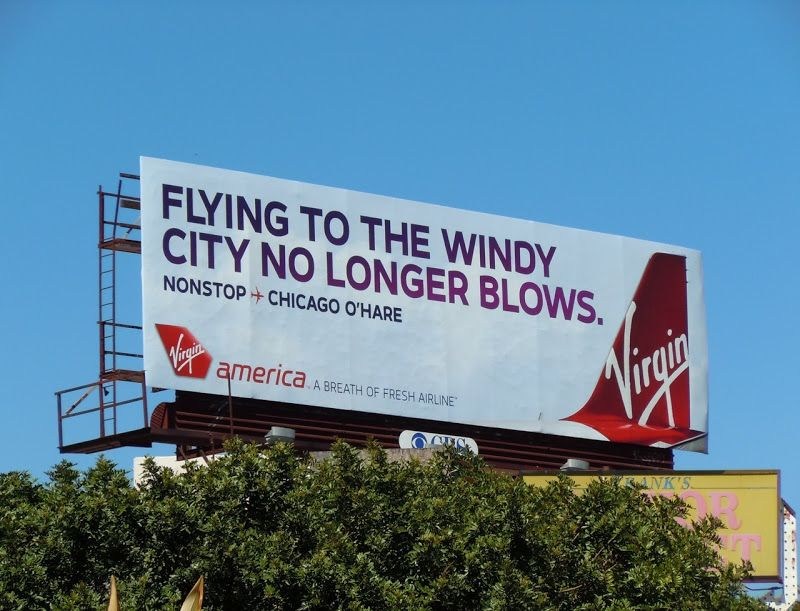How much does a billboard cost in the US? In 2025, the national average is $3,953.16 for a four-week campaign. However, it depends on where your billboard will be placed and the type of billboard you use (physical or digital). Plan to spend between $1,000 and $5,000 a month in small to mid-size cities and between $8,000 and $100,000 in more populated areas.
Your billboard advertising cost will also depend on factors like your billboard’s out-of-home (OOH) rating, campaign length and season, and ad size. Keep reading for a breakdown of billboard advertising costs, the factors affecting them, and tips on getting started with your billboard campaign.
If your vision is big but your ad budget is small, Blip Billboards offers digital billboards that play 10-second “blips” of your ad according to your daily budget. You can set your own budget and pay as you go with no long-term contracts, so it’s a good starting point for small businesses.
How much billboards cost in the US by state
In the United States, how much a billboard costs differs based on the ad market in each area. Generally, physical billboards can cost $1,000 to $35,000 a month (or more in super-populated cities). Digital billboards cost as low as $10 a day with providers by Blip Billboards. Dedicated digital billboards run from $1,800 in mid-sized cities like Davenport, IA, to over $100,000 in big cities like Los Angeles.
Explore the interactive map below to find out the average monthly cost of billboard advertising by state in 2025 for both traditional and digital billboards*.
Average Billboard Cost by State
Knowing how much billboard advertising costs will depend on the area you want to advertise in. States with larger markets, such as New York or California, will have much higher billboard prices than areas with smaller and more scattered populations, like Alaska or Kentucky. Click on the interactive map below to find out the average monthly billboard cost by state in 2024.
*The prices above are for March 2025 but can vary with time.
Billboard advertising costs in representative US cities
Davenport, Iowa | Indianapolis, Indiana | Orlando, Florida | Phoenix, Arizona | Boston, Massachusetts | Los Angeles, California | |
|---|---|---|---|---|---|---|
Physical Billboard Cost per Month | $1,427 - $5,475 | $1,060.00 - $4,255.21 | $1,140 - $16, 528 | $1,853 - $15,567 | $1,060 - $35,428.33 | $8,394.33 - $10,973.64 |
Digital Billboard Cost per Month | $1,813 - $4, 900 | $1,143,80 - $12,600 | $2,647 - $19,450 | $1,925 - $7,170 | $1,764 - $5,880 | $6,300.00 - $175,000.00 |
Population | 101,724 | 887,642 | 307,573 | 1,608,139 | 675,647 | 3,898,747 |
Sources: Billboardsin.com, Data.census.gov
Factors affecting billboard advertising costs
As with any other small business advertising channel, billboard advertising rates are dynamic — they vary for different times and places. They’re affected by two main factors: the billboard’s OOH rating as determined by Geopath, an audience location measurement tool, and external ad market factors like your ad campaign’s length and season.
Factors that determine OOH ratings
- Demographics: These are a breakdown by age, gender, and income level of people who typically pass a billboard. Expect to pay more to advertise in locations that reach people with higher income levels.
- Circulation: Circulation is the total volume of traffic that passes the billboard as derived from transportation authorities. The circulation does not take into account whether passersby see your ad.
- Visibility research: This factor determines the likelihood that your billboard will be visible to people in the area. This is determined by eye-tracking analysis and the speed at which people pass by your billboard.
- Reach and frequency: Reach is the likely number of people who actually see your ad based on the size and location of the billboard. Frequency is the number of times your ad will likely be seen.
External market factors
- Campaign length: How long your campaign runs. This is the biggest factor impacting your overall monthly cost for billboard advertising. The longer your campaign, the higher your cost.
- Seasonality: Certain times of the year have higher demands than others. For example, billboard advertising costs are expected to be higher during the holidays or around Black Friday.
- Location: Densely populated areas will have a higher average billboard cost than rural cities with fewer populations. For example, a billboard ad in New York City will cost more than one in Ada, Oklahoma.
- Billboard size: The bigger your billboard space, the higher your campaign cost.
- Lighting: Lighting your billboard up at night keeps it visible 24/7 and captures a wider audience. However, they can typically be up to 25% more expensive than unlit billboards.
- Production expenses: If you have a traditional billboard, you’ll also need to factor in costs for printing, materials, and installation, which can vary for each provider. If you’re outsourcing your billboard design, you’ll also need to consider design costs.
Pros & cons of billboard ads (& who they’re best for)
Billboards can give your brand plenty of exposure and communicate a simple, clear message. On the flip side, however, they can be expensive and difficult to measure for effectiveness. Along with knowing how much billboards cost, below are some of the biggest pros and cons of billboard advertising to help you decide if it’s the best option for your business.
| PROS | CONS |
|---|---|
| High exposure to large, broad audiences | Static location (unless using mobile OOH ads, such as vehicle-mounted ads) |
| Relatively low cost per impression | Long setup time and short exposure periods |
| Location targeting | Measuring effectiveness can be challenging |
| Effective for simple messages | Can’t be hyper-targeted by audience interest or behavior like with digital ads |
| Have a better reputation among consumers over other ad formats | No engagement with users (unlike digital ads) |
Who billboard ads are best for
Billboard advertising can work well in many scenarios, from building brand awareness to generating interest in a cause. For example, if you’re a new business, you can leverage billboard advertising to build your brand presence regionally. In fact, billboards on highways that advertise local businesses are very actionable because audiences are already nearby.
Billboards are also a great option if you don’t need to generate sales immediately but want to create interest or leads for your business. If you’re still on the fence about whether billboard ads are good for your business, consider the following questions.
- Does your product pass the eight-second rule? If you can’t make your pitch in eight seconds, billboards are probably not the right channel. The non-animated, static nature of traditional billboards may be ineffective if your message requires interpretation.
- Is your product relevant to a mass audience? If your product is only relevant to a small percentage of the population, you’ll waste a lot of money on “unnecessary” billboard impressions. For example, a distributor of vegan food products likely only appeals to the 1% of Americans who are vegan.
The main benefit of billboard advertising is the ability to reach a large and diverse population within a specific geographical area. They’re a form of mass advertising but for a very location-specific audience. For example, everyone eats, so restaurants are a natural fit for billboards. Review other types of businesses that are most suitable for billboard advertising:
- Restaurants
- Retail stores
- Real estate agents
- Private doctors, dentists, veterinarians, etc.
- Law firms
- Financial institutions
- Clinics
- Fitness centers
- Educational institutions
- Professional sports teams
- Home services (e.g., HVAC, landscaping, construction)
- Nonprofits and public service announcements
In contrast, because of their static location and nature, billboards aren’t a great option for targeting very specific audience interests and behaviors or tracking your message’s effectiveness. They are also mono-directional (not interactive like online ads), so they won’t be very effective for generating audience engagement.
Traditional (physical) vs digital billboards
Physical billboards have some advantages over digital billboard advertising. For example, physical billboard ads are often easier to set up because the infrastructure has existed for several decades in the US. Plus, printed advertisements are not subject to glitches and power outages, unlike digital billboards.
On the other hand, digital billboards are more dynamic and attention-grabbing. They can be targeted based on time of day and other factors. They also tend to have more cost-effective options, like those from Blip Billboards.
Traditional Billboards | Digital Billboards |
|---|---|
Typically less expensive per impression | More dynamic and, therefore, more attention-grabbing |
More existing infrastructure | Better targeting with the ability to display ads during specific days or hours |
Not subject to glitches | More flexibility as you can update and optimize ads quickly |
Full ownership of the ad space for the entirety of your campaign | Lower entry-point cost for rotating billboard ads |
Other OOH advertising options
Billboard advertising rates can be pretty unpredictable because of the many factors affecting them. The good news is that billboards aren’t your only option for broadcasting your message to a wide audience. Oout-of-home advertising options are also available that can reach audiences similarly.
- Street furniture ads: These ads usually appear on public transit like bus stations or public garbage cans and info pillars. While smaller, they still reach a mass audience in a specific location and often cost less than billboards.
- Transport ads: A transport ad gives your advertisement more mobility and easily catches attention in high-traffic areas. They often come as vehicle wraps, taxi ads, or posters on subways and trains. They’re a good choice if you don’t want your ad to remain in one fixed location but still want to capture a local audience.
- Place-based ads: These ads are specific to where they’re placed; for instance, travel insurance ads at an airport or sports drinks ads near a gym. They’re a good option for targeting audiences of a specific interest (like travel or fitness) in a specific location.
- Guerrilla or wall mural ads: These are more unconventional types of ads that are painted directly on a blank wall. While more attention-grabbing, they can take longer to set up, but they can be a good option if your business has a fixed location or a creative or unconventional brand.
How to get started with billboard advertising
Once you’ve decided billboard advertising is a good fit for your business, the next step is to get it right. Billboard ads require good strategy, planning, and design to be effective, from the location you choose for your billboard to its design and ad copy. Follow my four steps to get started with your billboard advertising campaign.
Your billboard’s location is the most important consideration when choosing outdoor advertisement. Factors that influence the effectiveness of your billboard’s location are traffic speed, the billboard’s proximity to the road, and travelers’ destination. If you decide that a billboard is right for your business, evaluate several locations to choose the one that will target the most potential customers.
Consider three factors when choosing the best spot for your billboard.
- Traffic speed: People are more likely to see your ad if they’re on a congested highway than on a train route where travelers pass at 40 mph. Choose a billboard located on a street with a low-speed limit or a roadway susceptible to traffic congestion.
- Proximity of the billboard to the road: The distance of a sign from the road affects its visibility to passing drivers. Pick a billboard location close enough to the road to be legible.
- Traveler destination: Consider whether you’re advertising your business to locals or people just passing through town. Also, consider whether people are likely to visit your business on their way to or from work.
These details are generally available from the company selling the billboard space. However, visiting the location before committing to billboard advertising is also a good idea. Analyze where your customer base is coming from, and put the billboard exactly where they’re most likely to see it.
Pro tip: Consider buying a physical billboard directly across from your competitors that draws attention to your brand’s unique selling proposition. For example, the McDonald’s billboard below pokes fun at Starbucks’ prices.

An example of a physical billboard capitalizing on brand differentiation. (Source: SeattlePI)
After finalizing your billboard’s location, the next step is planning your campaign, including:
- How long your billboard will be live
- The type of billboard you’ll use (traditional or digital)
- The specific dates your campaign will run
Additionally, think of how you’ll measure your campaign’s effectiveness. Billboards don’t have an official success metric, only estimated ad impressions. This means you’ll have to measure your campaign’s impact in other ways depending on your objectives, like more app downloads, website visits, or foot traffic — while keeping in mind it’s not a perfect guarantee.
The next step is to design your billboard. Billboards are one of the most creative advertising formats for communicating your brand identity and really standing out. I always advise looking at real-life billboard design examples for inspiration, but follow my design tips to get started.
- Don’t over-clutter your billboard design. Billboards offer a wide space, but that doesn’t mean you need to fill every corner. Think instead of how you can use design to send your message in the most attention-grabbing and memorable way.
- Have one clear message and call to action. Your billboard only has a few seconds to capture people’s attention and communicate your message effectively. So, don’t confuse people with an overly long or complicated message. If it can’t be understood in eight seconds, revise it so it’s clearer.
- Highlight what makes your brand unique. People see dozens of billboards daily, but what’ll really capture attention is one from a unique and authentic brand. Incorporate your brand colors, imagery, and voice into your billboard design to promote recognition.
If you’ve already chosen a billboard location, note the advertising company behind it. It’s usually listed on the structure itself. Some of the largest billboard companies in the US are Lamar, Clear Channel, and CBS Outdoor, but there are also many local and regional providers.
After noting the billboard provider, reach out to them via their website to get your billboard advertising price quote. Agree on your campaign length, send your design, and launch your billboard campaign.

A billboard for rent from Lamar on the highway (Source: Lamar)
Are billboards still relevant in 2025?
While digital ads are having their moment, billboards aren’t an obsolete advertising strategy in 2025. People still commute. So, while the price for billboard advertising can be higher than digital ads, they’re still an effective way to get your business noticed, whether you opt for a traditional or digital billboard.
Billboards are still relevant in 2025 for five legitimate and compelling reasons:
- Digital fatigue is real. 38% of consumers report feeling some level of digital or tech fatigue, which can cause them to feel less connected to ads on their screens. That’s where billboard advertising comes in. Customers today crave more real-world experiences to really connect with a brand.
- Strategic billboard placement guides customer journeys. Placing the right billboard at the right place and time can target audiences precisely where they are on the customer journey and guide them accordingly. For example, United Airlines’ OOH campaign targeted audiences in airports in specific cities to show how many places their planes could fly to.
- People like outdoor ads. One side effect of digital fatigue is people appreciating real-world things more, like outdoor ads. A 2024 study by the OOH Association of America (OAAA) found that nearly 73% of customers think positively of outdoor ads — far more than TV, online, audio, or print ads.
- “Micro-moments” and experiential ads are everything. Lockdowns and social distancing defined the early 2020s. So, it’s unsurprising that marketing now is all about creating real experiences and memorable “micro-moments” with audiences. Customers are now more inclined to purchase from a brand after an experiential event. That event can be as simple as a well-placed and well-designed billboard.
- OOH ads prompt customers to take action. Finally, OOH ads are just plain effective. The same 2024 OAA study found that digital billboard ads prompted 76% of customers to take action, whether watching a video, making a purchase, or visiting a store.
Frequently asked questions (FAQs)
The average cost to advertise on a billboard is $3,953.16 in 2025. However, this depends on your billboard’s location. Less populated areas like Maine and Montana will cost less, while larger and more densely populated ones like New York and California will cost more. Factors like your campaign length, season, and type (traditional or digital) will also affect your billboard advertising costs, as well as expenses like printing, materials, design, and installation.
Owning a billboard in a densely populated area with a lot of businesses can be a steady source of income. Digital billboards can especially be helpful in areas with plenty of small businesses, as you can rent billboard ad spaces for different times of the day. However, the biggest risk of owning a billboard is potential changes in its location; for example, someone might build in front of your billboard, blocking its visibility.
A digital billboard can cost between $1,813 and $4,900 a month in cities like Davenport, Iowa, and between $6,300 and $175,000 in larger cities like Los Angeles. However, this also depends on your digital billboard provider. For instance, some providers like Blip Billboards offer a pay-as-you-go price structure that fits whatever daily budget you set — even as low as $5.
Bottom Line
How much does a billboard cost largely depends on where your billboard is placed, for how long, and what time of year it’ll go live. It’ll also depend on the type of billboard you’re advertising on, whether physical or digital. But on average, expect them to cost between $1,000 and $5,000 a month in small to mid-sized cities and between $8,000 and $100,000 in large, densely populated ones.



